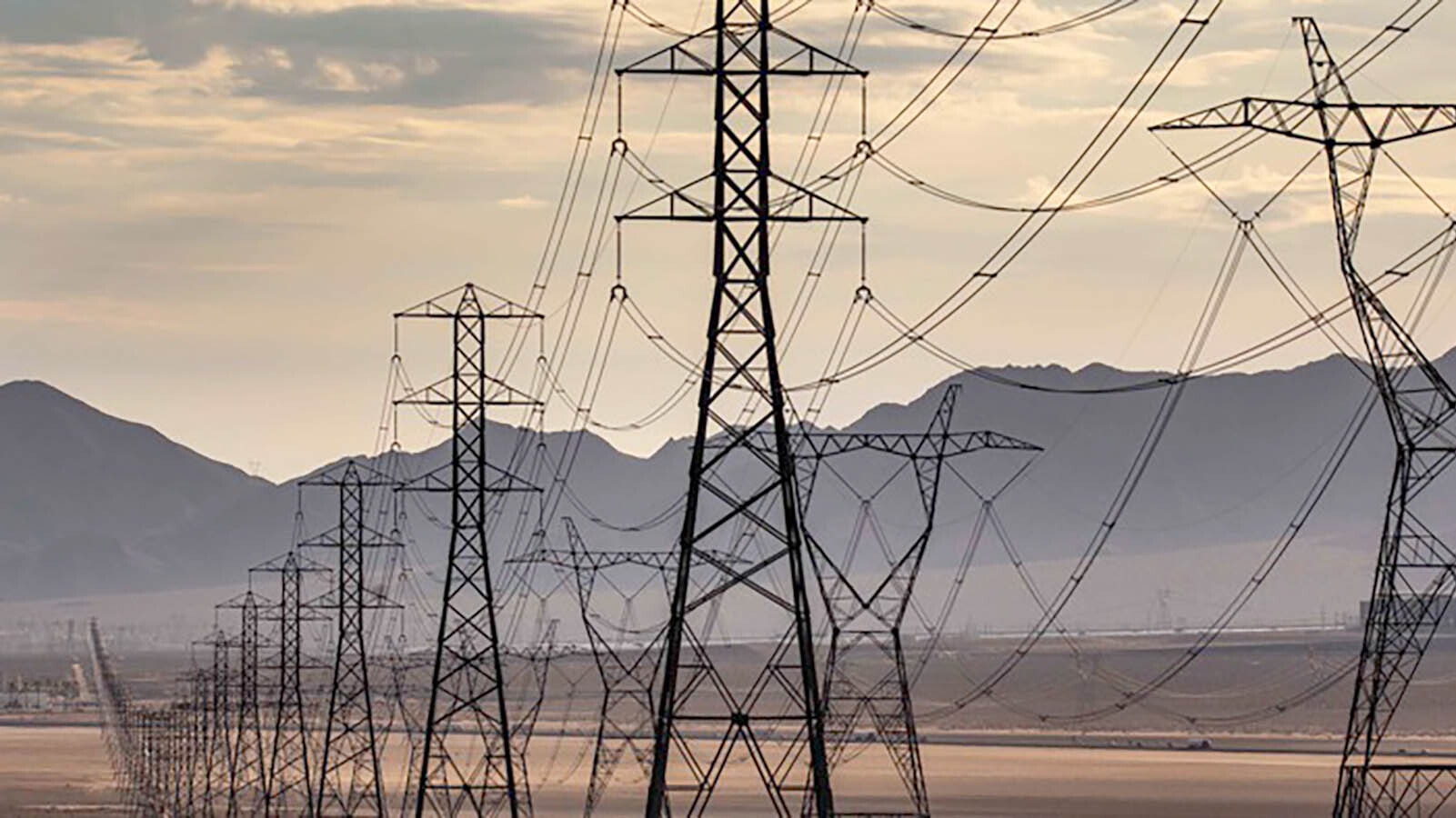CHEYENNE — Wyoming’s large industrial electric consumers and the state Public Service Commission will both appeal a recent ruling that says Wyoming’s Rocky Mountain Power customers owe the utility $23.5 million.
Both Wyoming Industrial Electric Consumers (WIEC) and the Wyoming Public Service Commission (PSC) each filed notices of appeal in the U.S. 10th Circuit Court of Appeals in Denver on Tuesday, signaling that the legal fight over Rocky Mountain Power’s 30% rate increase requests in 2023 is far from over, and that they’re not satisfied with the decision issued in September by U.S. District of Wyoming Judge Kelly Rankin.
Rankin wrote then that Wyoming couldn’t pass the buck to out-of-state customers simply because it’s “dissatisfied with the allocation of costs between in-state customers and other customers,” adding that the reasoning the PSC used to reject that portion of Rocky Mountain Power’s rate increase has already been prohibited by prior case law.
FERC is the federally recognized authority in charge of setting both capacity and rates for interstate transmission (referred to as OATT), Rankin wrote, and states cannot simply refuse the rates the federal agency required of Rocky Mountain Power.
Issues Needed More Attention
Rankin’s ruling was what’s known as a summary judgment, which means it was made without a hearing, based on facts already in evidence that neither side disputed.
Those types of rulings are not uncommon, but the lack of a hearing is something that State Sen. Cale Case, R-Lander, said bothered him, as well as some of his colleagues.
“To dismiss it without even having a hearing on it … I just think it needs more attention to it than that,” Case told Cowboy State Daily Thursday afternoon. “I know there’s the issue of FERC jurisdiction, but I think a lot of my colleagues have been suspicious that the increases in transmission capacity that Rocky Mountain Power has built has been largely for the purpose of taking renewable energy out of Wyoming, and that the transmission doesn’t benefit Wyoming customers.”
Rocky Mountain Power, during its rate case hearing in 2023, argued that renewables were not only not responsible for the combined 30% rate increases they were requesting, but were actually helping to keep costs lower.
Bills would have been a collective $85.4 million higher without renewables, Rocky Mountain Power CEO Gary Hoogeveen testified at the time.
But many in Wyoming don’t believe the utility’s claim, Case among them.
“We even passed a law a couple years ago trying to emphasize that we thought these things should benefit Wyoming customers before we pay for them,” Case said. “I know Rocky Mountain Power was very happy about (Rankin’s) ruling, and they feel they’re on firm grounds for the appeal. But I think the issue needs clarification, and I was kind of disappointed (Rankin) did that without a hearing.”

Power Costs Top Of Mind For Seniors
Case wasn’t the only one cheering the state’s decision to appeal the decision in the Rocky Mountain Power Rate Case.
AARP Wyoming’s Associate State Director for Communications/State Advocacy Tom Lacock was also pleased to hear that the fight is still on.
“We are hosting our state volunteer leadership summit, and rest assured, the cost of power is top of mind among this group,” he told Cowboy State Daily Thursday afternoon. “Our volunteers know their power bills keep going up and there is tremendous uncertainty as to how and when they can see some relief. This appeal may have some bearing on that question.”
Lacock was among those who watched Rocky Mountain Power’s combined 30% rate increase requests in 2023 closely.
“For older adults living on fixed incomes, even modest increases in monthly bills can strain tight budgets,” he said. “Energy advocates estimate residential electricity prices could reach a 12-year high this year. Nearly two-thirds of adults 50-plus reported increases in their electric bills. And at least 3 in 4 expressed concerns that costs will continue to climb, according to a July survey from AARP’s Public Policy Institute.”
Likely Arguments On Appeal
Rocky Mountain Power and the Wyoming Public Service Commission said they would not comment on an active legal case, while WIEC did not respond to a request for comment.
Arguments that the entities make in the appeal likely won’t be new issues, however. Typically, on appeal, new evidence in a case isn’t permitted, unless there’s a particularly compelling reason or mistake. In that eventuality, a case is typically returned to the original court for further consideration and, potentially, a new decision.
Otherwise, both parties will likely have to confine their arguments to whatever they had filed ahead of Rankin’s order granting summary judgment in the case. Those filings are the best preview of what each side is likely to argue.
The PSC, in its filing, had argued that Rankin should find the case is moot, since the January 4, 2024, order that Rocky Mountain is contesting has been superseded by a new order, issued June 2, 2025. Nothing in the case, filed by Rocky Mountain Power’s parent company, PacifiCorp, suggested the new order is constitutionally impermissible. In fact, the utility has already publicly stipulated to those rates as just and reasonable.
“Any decision this Court would issue would have no ‘real-world effect’ because the challenged rates are no longer in effect,” Wyoming PSC wrote. “This Court lacks subject-matter jurisdiction, because it cannot grant effective relief to PacifiCorp.”
PacifiCorp, meanwhile, argued that the Commission itself has made statements showing that the case is not really moot at all, and that real-world relief is indeed available.
“Earlier this year, WIEC and PacifiCorp entered into (and the Commission approved) a settlement agreement expressly forecasting that — after the entry of the 2025 Order — this Court would decide whether the Commission’s imputation of revenue was improper and that there would be further proceedings before the Commission if the Court decided that issue in PacifiCorp’s favor.”
In addition to suggesting there could be further proceedings to determine actual rates, the Commission also at one point suggested Rocky Mountain Power would have a chance to recover any trapped costs caused by its 2024 order during upcoming energy cost adjustments, referred to as ECAM.
“By the Defendants’ admission, the issue of trapped costs (and whether PacifiCorp is permitted to recover those costs moving forward) is not moot,” PacifiCorp argued. “Put simply, the defendants should not be permitted to argue — on the one hand — that PacifiCorp may seek redress (whether through the ECAM proceeding or a petition to the Commission) when opposing summary judgment or seeking settlement, while asserting — on the other — that this case is moot because there is no possible form of relief available to PacifiCorp.”

How Much Is At Stake
The original rate increase that Rocky Mountain Power had sought in 2023 was in the neighborhood of 30%, but the rate case PacifiCorp filed deals with a much smaller slice.
The dispute centered on how much cost Rocky Mountain Power had set aside for the reserve energy generation that the Federal Energy Regulatory Commission (FERC) requires.
WIEC had argued during the rate case that the company’s modeling was flawed and that it was over-allocating costs to Wyoming customers.
How, or whether, the outstanding $23.5 million in question would be assessed to customers was something the PSC, WIEC, and Rocky Mountain Power all declined to discuss at the time, saying there wasn’t enough information yet.
Actions that followed the January 2024 decision that PacifiCorp appealed have likely changed the bottom-line figure, meaning the situation would likely have to be sorted out and addressed through some type of new filling.
An appeal will push the decision out for at least another year, if not more, lengthening the timeframe for recouping any costs that might remain outstanding.
Data Center Boom Complicates Power Landscape
The rate case dispute lands at a time of increasing complexity when it comes to public energy utilities.
There are discussions ongoing about whether to break up the six-state compact that PacifiCorp now serves, letting red states go one way and blue states another. And, too, data centers have boosted demand for power astronomically in communities across the nation. In Wyoming, data centers have collectively announced facilities that will use 12.8 gigawatts worth of power.
Some of those facilities plan to bring their own power, while others plan to seek power from utility companies. But it seems clear that more data centers, seeking more power, are on the way.
That has many people concerned about what that’s going to do to future rates.
Wyoming has been talking about that topic behind the scenes for the past year in an effort spearheaded by Wyoming Energy Authority.
The group’s stakeholders generally agree that incoming data centers need to be the ones bearing the cost for this unprecedented demand for power.
But how to assure that is a different matter. There’s no consensus on that issue yet.
That will be the big challenge ahead, but it’s also a big opportunity, Rep. Daniel Singh told Cowboy State Daily on Monday.
“If we do this right, we could simultaneously protect our public utilities and help foster our extraction industry in a way that we shield ourselves from the future impacts of the boom-and-bust cycle, which has been a generational problem,” Rep. Daniel Singh, R-Cheyenne told Cowboy State Daily on Monday. “This could solve a generational problem if we do it right.”
Renée Jean can be reached at renee@cowboystatedaily.com.






